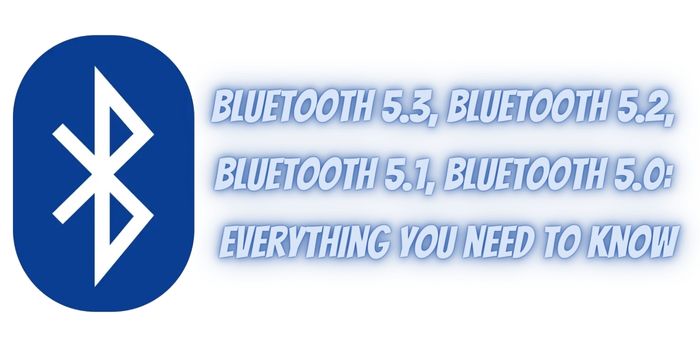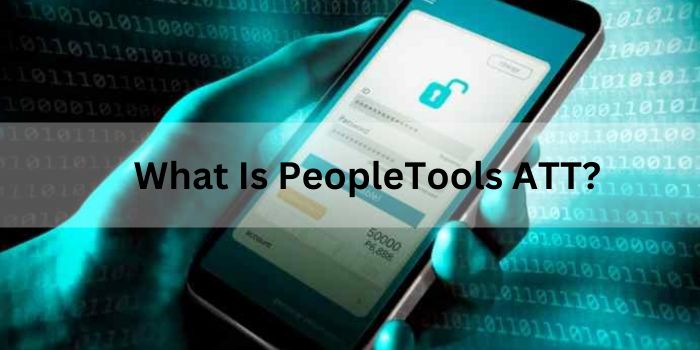Bluetooth is a wireless technology standard that facilitates communication between devices over short distances. Over the years, Bluetooth has evolved to improve performance, range, and efficiency. Here’s everything you need to know about the different versions of Bluetooth 5.3, Bluetooth 5.2, Bluetooth 5.1, Bluetooth 5.0 etc.
Designed to take over the role of the cords used to link devices, Bluetooth maintains the security of their connections. There have been versions of Bluetooth like any other series, and we will talk about the latest of all – Bluetooth 5.3.
So there is an updated version of the Bluetooth series of 5. We all want to know how that will be better, as people want to know about Bluetooth 5 vs. 5.3 and much more. Whenever a new version comes, we compare, like the Bluetooth 5.0 vs. 5.2 comparison, have helped users to pick better. Thus, we are here to make some comparisons like Bluetooth 5.1 vs. 5.3, and Bluetooth 5.3 vs. Bluetooth 5.0 and find how the 5.3 version is trying to get ahead of the line.
The Next Generation of Bluetooth Audio: LE Audio
Let’s talk a little about LE Audio and what it entails for clients and programmers before we further detail the capabilities. Since its inception, Bluetooth connectivity has established itself as the standard for portable audio. Portable speakers, car infotainment structures, wireless earphones, and earbuds are all examples of modern Bluetooth audio products. In actuality, Bluetooth is most frequently used for applications that stream audio.
These programs often use the initially developed Bluetooth radio, also known as Bluetooth Classic aka BR/EDR (Basic Rate/Enhanced Data Rate), that has been around since the first version of the protocol. Conversely, the recently released LE Audio utilized Bluetooth Low Energy (BLE). Along with matching Bluetooth Classic’s capabilities and specs, LE Audio adds a few new functions while enhancing those already present.
How many different Bluetooth variants are there?
The first Bluetooth specification, released in 2001, offered essential communication and information access. Following quickly, Bluetooth 1.1 had largely bug patches; Bluetooth 1.2 introduced the adaptive frequency shifting technique in 2003, which helps Bluetooth minimize the worst disturbance effects.
With the introduction of the “enhanced data rate” feature (EDR) for Bluetooth 2 (2005), peak transfer rates were increased from 721 bits per second to 2.1 bits per second. Almost immediately after, Bluetooth 2.1 introduced easy pairing, allowing devices like earbuds to pair automatically or by merely pressing to verify the connection.
The high-speed (HS) data-transmission mode developed during Bluetooth 3 (2009), which supports transfer rates of upwards of 24 Mbits/sec, significantly boosted Bluetooth’s efficiency capability.
Bluetooth LE, frequently referred to as Bluetooth 4 but simply BLE is an innovative “low-energy” option introduced with the fourth-generation Bluetooth specification in 2010.
The most recent iteration of Bluetooth technology is Bluetooth 5.0. In the middle of 2017, gadgets started supporting Bluetooth, and today, it is present in many Bluetooth-enabled devices. Compared to Bluetooth 4.0, the latest version delivers fourfold the reach, double the speed, and enhanced bandwidth.
Bluetooth 5.0
The most modern Bluetooth wireless connectivity protocol is Bluetooth 5.0. This is frequently used for cordless devices such as speakers, tracking devices, headsets, and other audio gear, as well as wireless keyboards, mice, and gaming controllers. After updating your smartphone, you will only get immediate results or advantages if you still use outdated Bluetooth accessories. You may utilize all your gadgets on a Bluetooth 5.0 smartphone or tablet because Bluetooth is backward compatible with every one of its earlier versions.
Features –
- Due to its 2x pace, 4x range, and 8x data capability, Bluetooth 5 provides versatility to improve Internet of Things (IoT) solutions.
- Its updates make Bluetooth devices compatible with the increasingly complicated global IoT setting, reducing interference from different wireless technologies.
- When the speed is raised, this would have more excellent audio performance than its previous version.
Bluetooth 5.1
The upcoming Bluetooth version offers developers fresh opportunities to explore their artistic talents. The Bluetooth’s Special Interest Group (SIG), the organization that regulates Bluetooth technology, has disclosed some of the critical characteristics of the innovation that will excite you.
Features –
- Angle of Arrival (AoA) and Angle of Departure (i.e., AoD) are the two direction-finding options provided by Bluetooth 5.1. This implies it can pinpoint a device’s precise location (i.e., where the signal originates).
- Technology 5.1 involving Bluetooth protocol is rarely considered a significant upgrade from version 5.0. Despite being relatively slight, the modifications are nevertheless very beneficial. For instance, enhanced caching in this Bluetooth version boosts connection speed and reduces battery consumption.
- Devices may now pick channels at random with edition 5.1. As a result, it will be less likely for two devices using Bluetooth to interfere with one another over the same track. It will be helpful to have this enhancement in areas with plenty of Bluetooth devices.
Bluetooth 5.2
Bluetooth 5.2 primarily focuses on sound device enhancements. The major innovation in this is LE Audio, also known as Low Energy Audio, coupled with many other extraordinarily technical but mainly irrelevant materials. It also has a brand-new audio codec dubbed LC3, which offers outstanding audio quality while using less power.
Features –
- Regulating the power flow between two linked Bluetooth version 5.2 devices is feasible using LE Power control. Wireless receivers’ ideal received signal intensity range offers the highest signal quality.
- The connection via Bluetooth now uses the updated Enhanced Attribute Protocol (EATT) to convey data from a computing device to a consumer. The mobile device in this scenario is the client, with the earphones being the server.
- Broadcasting audio & multi-stream audio are made possible by isochronous channels. Isochronous refers to something that occurs concurrently.
Bluetooth 5.3
The Bluetooth SIG released the Bluetooth 5.3 specs in July 2021, with one of their main goals being to improve the technology’s suitability for Internet of Things apps like intelligent speakers and illumination and devices worn like bracelets and smartwatch devices. For this purpose, Bluetooth 5.3 has an interface subclass mode that lets a device switch quickly between high- to low-performance, conserving energy. So what is new about this version?
Improved recurring advertising
To increase the likelihood of receiving their data packages, Bluetooth devices broadcast numerous identical ones quickly. Reception devices can quickly spot and eliminate duplicates using Enhanced Periodic Advertising. Consequently, gadgets like headphones have longer battery lives since less time and energy are used to analyze duplicate data.
Read here: How To Choose Bluetooth Earphones (Full Guide)
Subrating for connections.
This function enables quick switching between minimal-duty and higher-duty cycles, which is meant to improve the user interface. For example, Bluetooth hearing aid consumers will typically have their gadgets on a lower duty period. However, the faster it can change to a heavy-duty cycle when they receive calls or engage in music via their cell phone, the more beneficial for the consumer’s experience.
Improvements to the encryption key size management
A technique for protecting data sent across two devices using Bluetooth is encryption. The encrypted critical duration, which is decided by the control panels of the two devices while establishing links, determines the degree of security. Developers may now set a minimum encrypting key length using the updated Host Controller Interface (i.e., HCI) control, enhancing overall safety and effectiveness.
This standard’s most recent series of versions is built around Bluetooth 5.0. The most recent upgrade to Bluetooth 4 changed file transfer rates and range—the distance across which information can be sent between them—by doubling both. The subsequent versions have only made minor adjustments since then.
What distinguishes Bluetooth 5.3 from others?
Which one should you pick if you had the option of many devices with various Bluetooth standards, like Bluetooth 5.0 (read below to find out the difference between Bluetooth 5.0 vs. 5.3 difference) or Bluetooth 5.2 and Bluetooth 5.3? The way out is complex.
This was the final significant modification to the Bluetooth system compared to Bluetooth 4.0 because these innovations are minor additions to Bluetooth connectivity 5.0. The flexibility and file transfer speed of the new technology has increased fourfold.
The upgrades of Bluetooth 5.1 & 5.2 are more compact versions required to enhance several minor aspects. As a result, Bluetooth 5.1 has increased device location capabilities, enabling them to obtain the whereabouts of other attached devices. This is done to ascertain the signal’s route of travel.
Then comes Covid’s early years, with the introduction of version 5.2, which brings some fascinating innovations to the field of Bluetooth. Low Energy power regulation is among the first significant aspects of this improvement to be discussed. With Bluetooth 4, energy-efficient technology was introduced.
However, it needed to be sufficiently advanced for most real-world uses, including streaming audio. Low energy was mainly employed for smaller scale processes, like with fitness monitors or similar items, because that needed much more computational power.
Larger quantities of data may now be sent using Bluetooth 5.2’s reduced bandwidth and battery requirements. The recently released LC3 codec, resulting in data shorter on the input end but far more effectively collapsed on the resultant side, basically achieves this.
Additionally, version 5.2 provides the Enhanced Attribute procedure, which enables concurrent parallel operations among two Bluetooth-enabled devices. This could be helpful if numerous applications on the phone were simultaneously using a Bluetooth item. These may all work simultaneously rather than one being halted while the remainders are running.
The most recent version of the Bluetooth five relatives, Bluetooth 5.3, is concentrated on improving energy consumption and minimizing device interference. So now let’s jump to Bluetooth 5.3 vs 5.0 and more.
Bluetooth 5.0 vs 5.1
Using Bluetooth 5.0, the gadget that transmits only has an approximate idea of where the receiver is located. This is as it measures the device’s distance using Bluetooth signal quality. Whereas Bluetooth 5.1 gadgets employ more antennae to detect the precise orientation, and the distance between them is determined by signal strength. The updated model can pinpoint a device within an inch because of its uniqueness.
The gadgets that have already been linked can connect more quickly, thanks to GATT Caching. Both devices communicate knowledge about what other gadgets support each time they are connected. The location of the linked devices must be checked often by devices using Bluetooth 5.0. This step is omitted in Bluetooth 5.1. As a result, you will have access to a quicker connection.
Bluetooth 5.0 vs. 5.2
It would be beneficial to understand the differences between Bluetooth 5.0 and 5.2, two widely used wireless communication technologies that build on one another. While Bluetooth 5.2 goes one step further with more capabilities and improvements than Bluetooth 5.0, both versions offer improvements to better wireless communication.
With Bluetooth 5.0, the distance between devices has more than quadrupled, reaching about 400 meters. Naturally, this assumes that there are no barriers in the way of the communication equipment. Around forty feet is the estimated indoor reach for Bluetooth 5.0 devices.
The range of Bluetooth 5.2 is mostly unchanged. However, you will see improved link stability due to version 5.2’s incorporation of more sophisticated data transfer methods like EATT.
With Bluetooth 5.0, communication rates quadrupled over earlier Bluetooth protocols, reaching about 2 Mbps. With EATT, a revised version of ATT that enables more robust and secure transmissions, Bluetooth 5.2 retains this speed.
Bluetooth 5.0 vs 5.3
Bluetooth 5.0 vs. 5.3 Which is better? Compared to previous releases, Bluetooth 5.0 & 5.3 have a more extended range, enabling devices to keep steady connections across longer distances. Although the range capacities of the two versions are comparable, Bluetooth 5.3’s extra features may improve the overall experience in some situations.
With its improved audio capacity, Bluetooth 5.3 goes one step further. With LE Audio plus the LC3 codec, Bluetooth 5.3 is a better option for audio devices since it allows for higher-quality sound at reduced bit rates and increased battery economy.
Considering your unique demands, compatibility with your devices, and if an update is necessary, it is essential, given the new capabilities each version delivers when selecting between Bluetooth 5.3 vs 5.0.
Bluetooth 5.1 vs 5.2
The frequency range, transmission range, and data transmission rate of Bluetooth 5.1 & Bluetooth 5.2 remain the same. This is true since they only represent advancements over Bluetooth 5.0.
Both differ based on the objectives and the reasons for their creation. IoT devices are the primary focus of Bluetooth 5.1 technology. Device-performed ads and object placement are made to link to surrounding objects and get pertinent data. The main focus of Bluetooth 5.2 is syncing signals and sending audio to several devices. To maximize energy efficiency, we use information compression and modify the strength of the signal.
Bluetooth 5.1 vs 5.3
With the help of Bluetooth 5.1, gadgets can locate one other, determine where they are linked to other devices, and determine which way their communication is coming through.
A channel categorization improvement is also included in the new edition. The Bluetooth frequency range is split into numerous channels to lessen the chance of conflict. Congested or too loud areas are classified as “bad” and should be avoided when communicating.
This version contains a filter for changes to the recurring advertising procedure to enhance performance using less energy. This indicates that the transmission removes duplicate information, reducing the modest peak power usage of the data supply.
Bluetooth 5.2 vs. 5.3
A link sub-classing option in Bluetooth 5.3 hastens the change from an advanced to a low-performance condition and the opposite. In this latest version, channel categorization has also been improved. The Bluetooth frequency spectrum is divided into several channels to reduce the likelihood of disruption.
Only a tiny version has changed since Bluetooth 5.2 is a little upgrade over Bluetooth 5.0 and 5.1. Compared with Bluetooth 5.1 vs. 5.3, the former, which had a range of around 200 meters, failed to enhance spectrum greatly, but it improved contact stability when utilizing the Enhanced Attribute Protocol (EATT).




